
By Tanaya Sethi1 & Raagini Agarwal2
The Open Network for Digital Commerce (“ONDC”) was launched in India in 2022. A network which started with pilot projects in a few cities and only 5 network participants is now commemorating its first year and has managed to gain much traction among buyers as well as sellers. Today, the ONDC network has scaled up to onboarding more than 45 network participants with transactions reaching up to 25,000 retail orders per day across 400+ cities. The growth of ONDC into the network it is today is a big move towards the creation of a ‘robust digital public infrastructure’ which would play a significant role in the expansion of digital commerce in the country and in providing a level playing field for all players in the market both large and small.
I. Unpacking the ONDC
A. What is ONDC and what it is not?
Much has been written about the ONDC, but what is this “Open Network for Digital Commerce,” really? Is it an app? Is it a platform? What actually is an open network and what does it do?
ONDC is a network of open protocols. What does that mean? Think of the mail transfer protocol used to exchange emails. You may have a Gmail account, but you can send an email to someone who has a Hotmail ID or an Outlook ID. Or think of the United Payments Interface (“UPI”). You might have an account with any bank and be using any UPI app, but you can transfer money to another person who is using the UPI network irrespective of which bank or app they use.
ONDC, just like email and bank transfers, is an open network which makes digital commerce “platform neutral.” It is not an app or a platform in itself, but rather a network with which apps/platforms integrate.
Paytm, for example, is integrated to the ONDC network for selling food, groceries, fashion, electronics etc.:
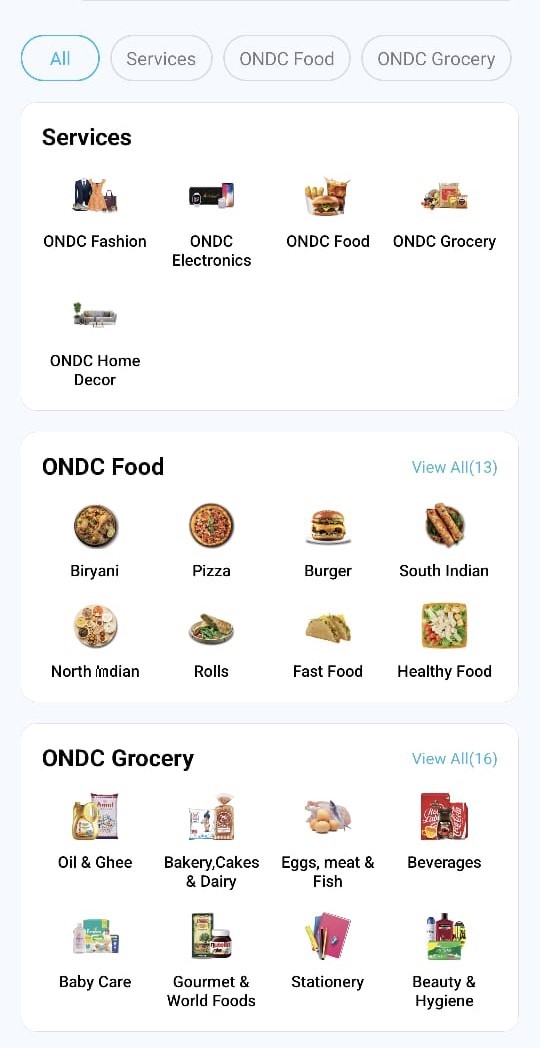
Picture: 1 |
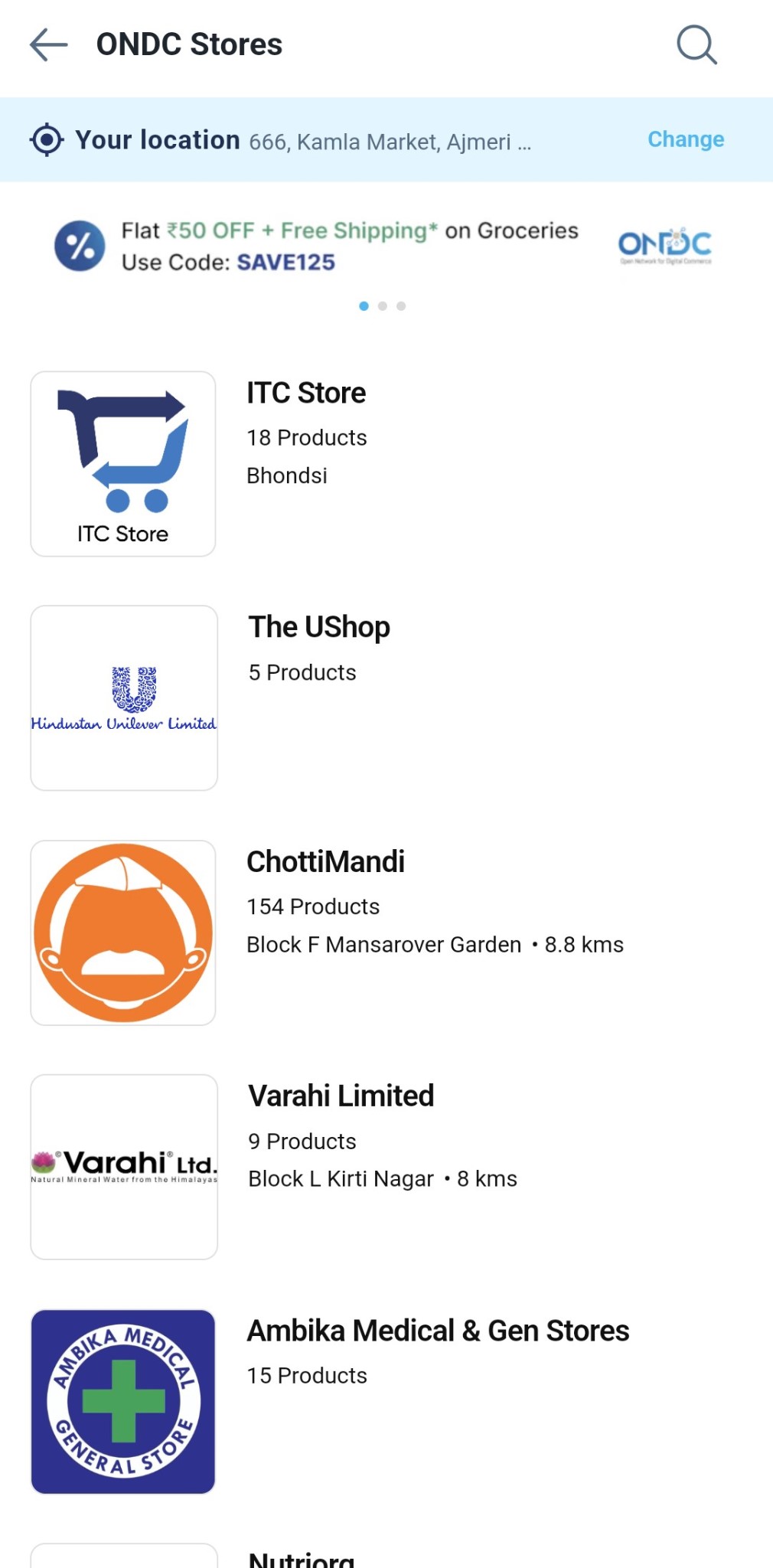
Picture: 2 |
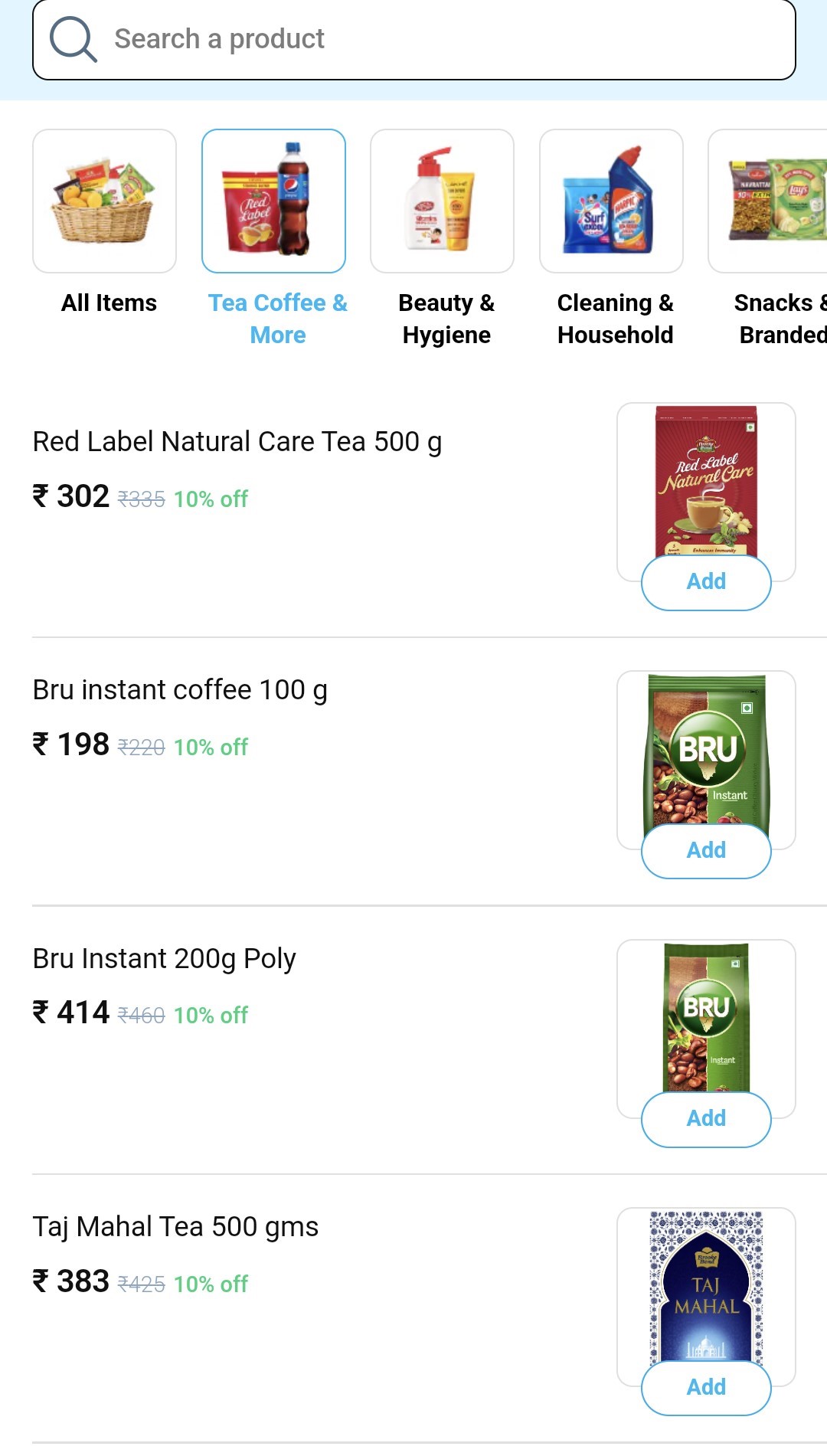
Picture: 3 |
The pictures above show how an order can be placed using the Paytm app, which is registered as a buyer-side participant on the ONDC network. Picture 1 shows the variety of services available on Paytm; Picture 2 shows the various sellers who are registered on the ONDC network and are offering products/services on the network; and Picture 3 shows the various products that a particular seller (in this case the ITC Store as shown in Picture 2) is offering. A customer can simply add the desired products to its cart and proceed to checkout to purchase the items selected.
B. How is Paytm selling groceries different from Swiggy/Instamart selling groceries?
As a buyer-side app registered on the ONDC network, Paytm is part of a network based on open protocols that are not owned by any single company/platform and are kept open so that any interested company can follow the protocol to join the ONDC. A platform (like Swiggy/Instamart), on the other hand, is a closed environment that onboards both sellers and buyers onto the platform. It takes care of the entire lifecycle of the transaction – payment, logistics, and fulfilment services. For example, in the case of Swiggy/Instamart, buyer X will be able to purchase only the items that are offered on the Swiggy/Instamart platform. If buyer X wishes to buy products from sellers on another platform – for example, BigBasket – then they will have to log into BigBasket separately.
Unlike the platform model, a network of open protocols like ONDC allows buyers, sellers, and payment and logistic providers to come together and transact over the network. This means that buyer X, by logging into the Paytm app registered on the open network, will be able to buy products from sellers of both Swiggy/Instamart as well as BigBasket (on the assumption that Swiggy/Instamart and BigBasket all registered as sellers on the ONDC network) along with any other platform that is a part of the ONDC network.
C. What is ONDC solving?
The primary aim of ONDC is to enable network participants to collaboratively meet demand in the market. ONDC was envisaged with the aim of broadly addressing issues over which traditional e-commerce platforms (like Flipkart, Amazon etc.) have come under scrutiny, including a) market concentration which gives platforms excessive power and limits the competitiveness of new sellers; b) multi-homing by sellers on multiple platforms that require them to maintain separate infrastructures and processes for each platform; and c) lack of transparency and information asymmetry, which in this case means that sellers don’t get access to customer information. These issues also make ONDC relevant from a competition point of view.
II. Operation and Participants
According to the ONDC website, the network is active in 510 cities, with 503 cities in the alpha phase and 7 cities in the beta phase including Bangalore, Meerut, Mumbai, Delhi NCR, Chennai, Hyderabad, and Kolkata.
A. Modus Operandi of the ONDC network
The ONDC network has broken down the traditional platform-centric model into various parts, which includes the buyer side apps, the seller side apps, the gateway, and the logistics providers. While buyer apps are for the consumers to browse and identify products, seller apps are for the sellers to list their inventory. Logistics providers would help in the fulfillment and delivery of the products. The gateway helps relay the search requests received from the buyer apps to the seller apps and vice versa.
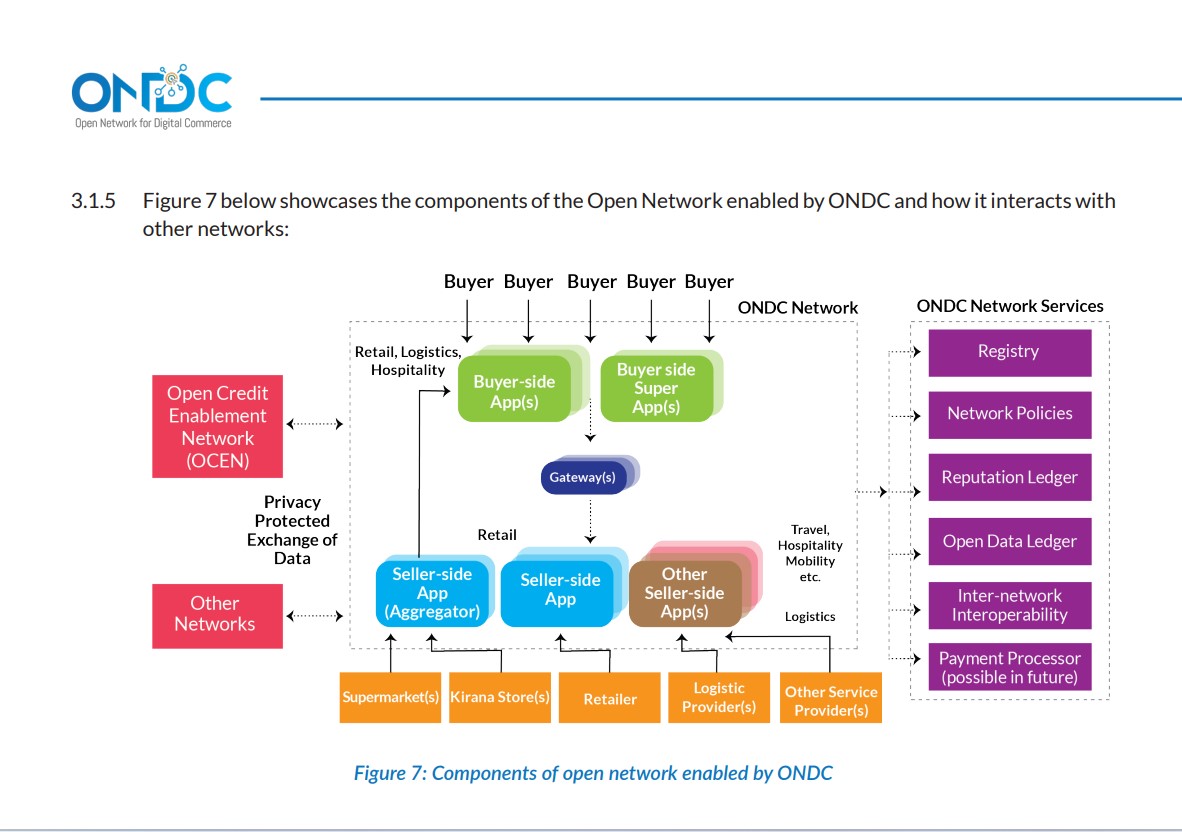
Source: Open Network for Digital Commerce: Strategy Paper, January 2022
How this works is that a buyer wanting to purchase a product from a seller registered on the ONDC network will have to log into one of the buyer-side apps registered there (like Paytm or Magicpin). After the buyers enter their search query for a product, they wish to buy on the buyer app, the search request is fired to all the seller apps on the ONDC network through the gateway. Once the seller apps respond to the search query showing all relevant results, the gateway relays the information back to the buyer app where the buyers can now select the product of their preference from a wider bucket of choices and add it to the cart. The relaying of information from buyer apps to seller apps and back happens in real time on the backend through Application Programming Interfaces (“APIs”) and is not visible to the buyers.
Once the product is added to the cart, the buyer can make the payment on the checkout page by choosing any of the payment options available on the ONDC network. When payment is completed, the seller app will share an order confirmation with the buyer. Upon confirmation of the order, if the seller does not provide delivery services, the buyer can choose to get the order delivered by selecting one of the logistics providers (like Dunzo) registered on the ONDC network. On selection of the logistics provider, the order tracking would commence and the selected logistics provider will assign a delivery agent to deliver the order to the buyer. Finally, the order is picked up by the assigned delivery agent and is delivered to the buyer.
B. Beckn Protocol – The technology used by ONDC
As explained above, the foundations of ONDC run on a set of open protocols. ONDC open protocols are available on code-hosting platforms including Github and SwaggerHub and include protocols for retail, such as statutory requirements for packaged commodities and pre-packaged food.
The ONDC’s open network allows sellers and buyers to use any compatible app (registered on the ONDC network) of their choice to exchange information and carry out transactions over the network. Thus, ONDC takes a step ahead of the closed, platform-centric e-commerce system wherein both the buyer and the seller are required to log into the same app or platform to carry out a transaction.
The backend of ONDC is built on the Beckn Protocol (core version 0.9.3) which is an open and interoperable source code for decentralized digital ecommerce. This open protocol enables services and sales offers to be discovered across industries and accessed by any buyer side app on the network. It facilitates the fulfillment of a transaction by breaking down each operation to its core elements i.e. discovery, order booking, payment, delivery, and fulfillment. It then treats each of these core elements as micro-level transactions and different network participants can come together to fulfill each of these micro-level transactions until the whole transaction has been fulfilled.
C. Network participants
There are around 50 network participants who have gone live on ONDC. Network participants include buyer apps, seller apps, and logistics providers.
- Buyer apps: Craftsvilla, IDFC, Kotak, Meesho, Mystore, Paytm, Phonepe, Spicemoney, Pincode
- Seller apps: Bizom, Digiit, EkSecond, Enstore, eSamudaay, eVitalrx, GoFrugal, Growth Falcons, ITC Store, nStore, Seller App, uEngage, UShop, Namma Yatri
- Logistics: Delhivery, Dunzo, Grab, LoadShare, Shiprocket
Following are the key features of certain popular network participants registered on ONDC – Namma Yatri & Pincode:
Namma Yatri
- India’s first open mobility auto hailing app
- Direct payment – 100 percent of the fare goes to the driver
- Zero commissions
- No surge pricing
- Drivers continue to multi-home on Uber, Ola
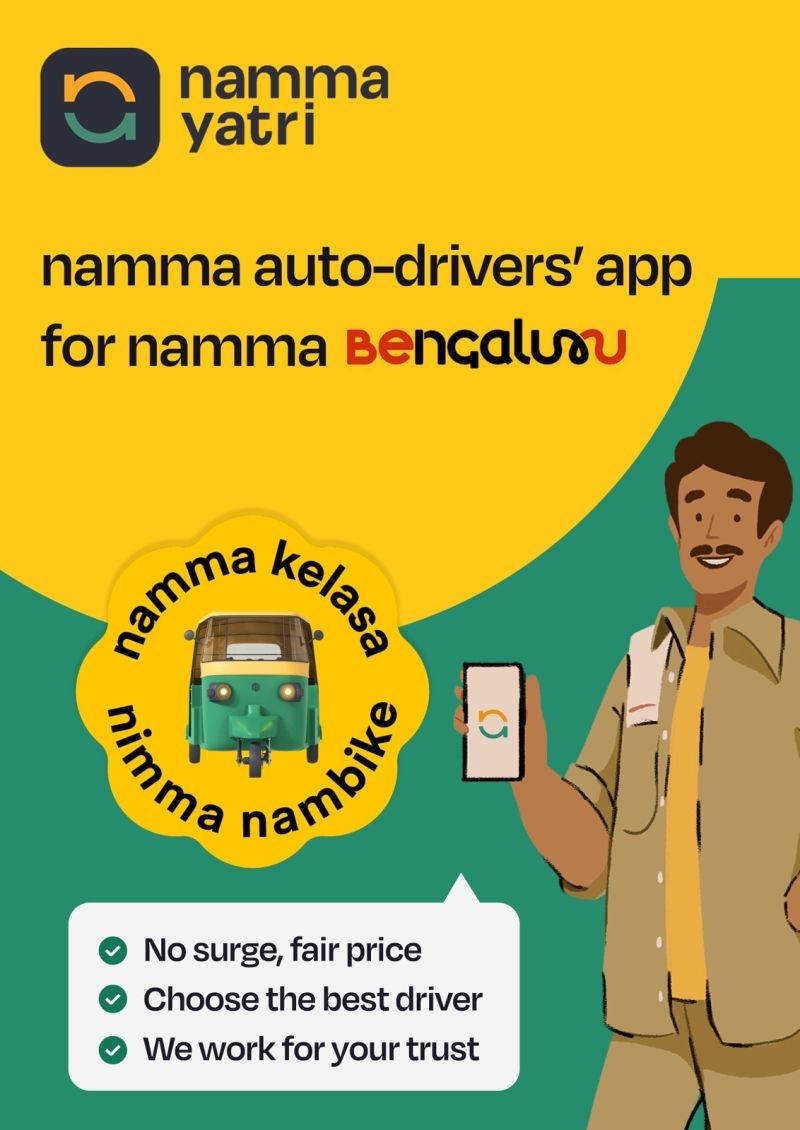 |
 |
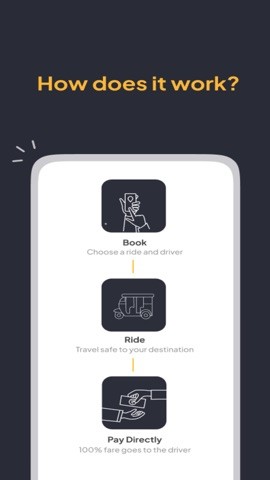 |
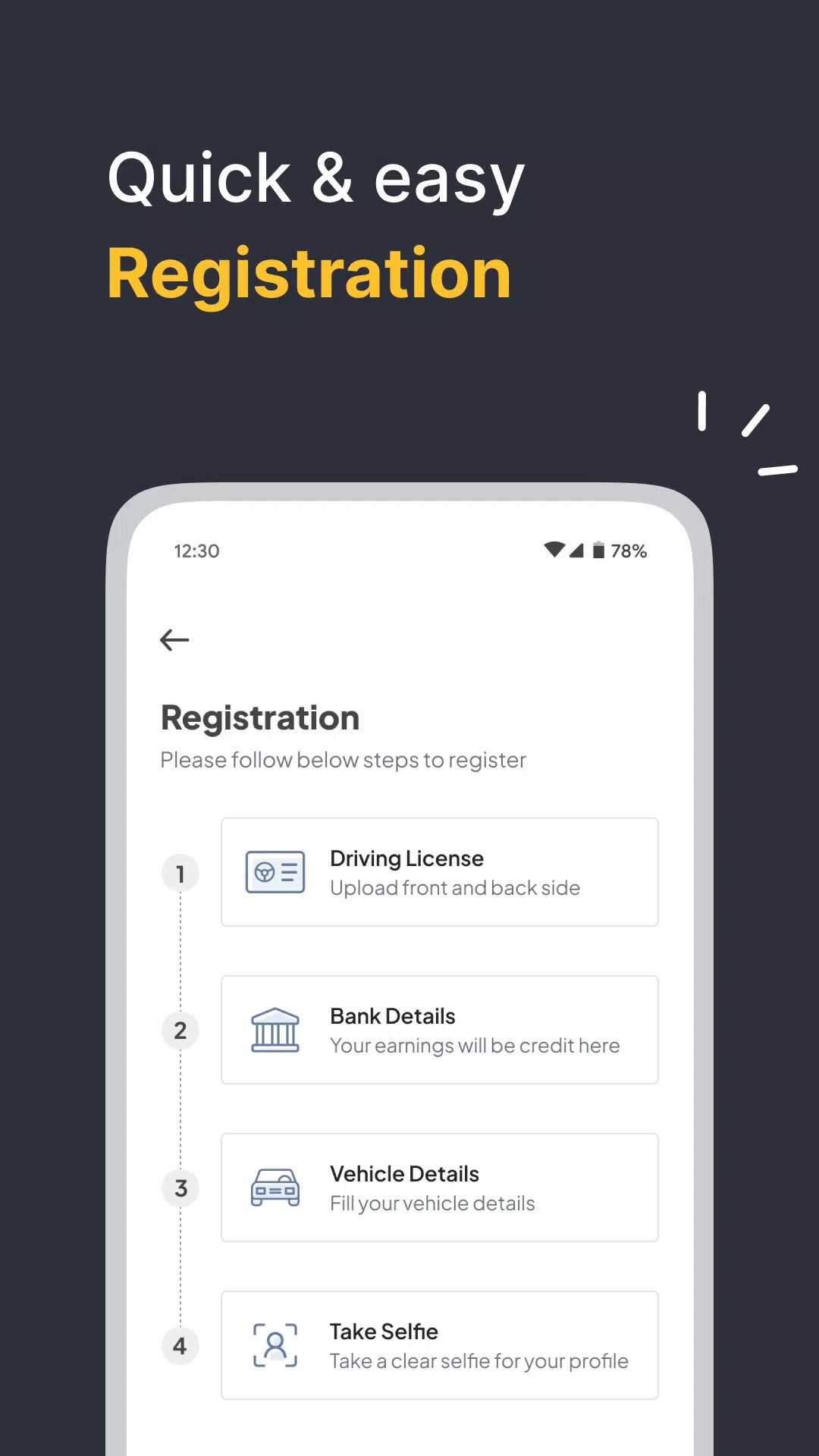 |
Pincode
- Super (delivery) app developed by PhonePe
- Has gone live in 10 cities across India including Mumbai, Delhi, Noida, Gurugram, Chennai, Hyderabad, Ahmedabad, Pune, and Kolkata
- Delivery managed by retailers, payments managed by PhonePe
- Last screenshot shows challenges faced in placing order
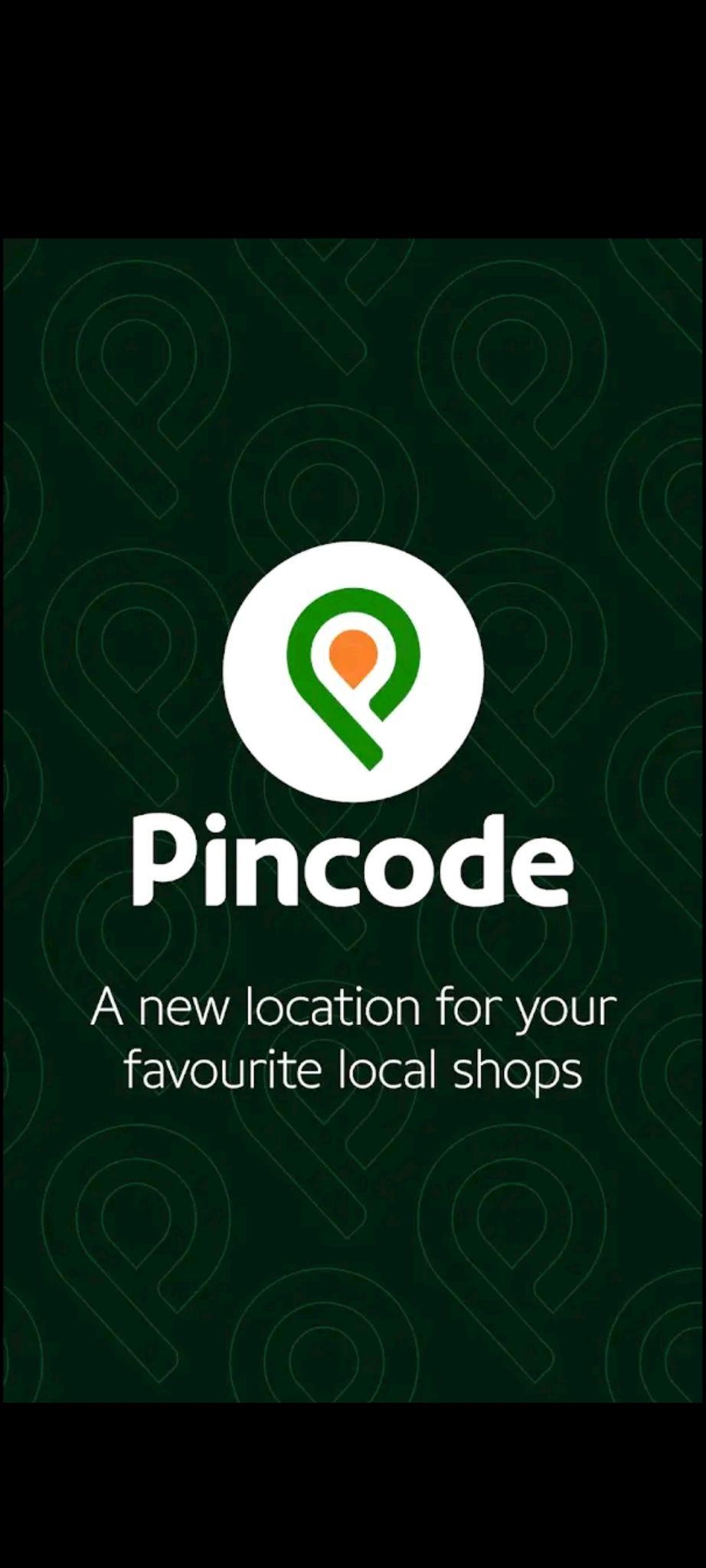 |
 |
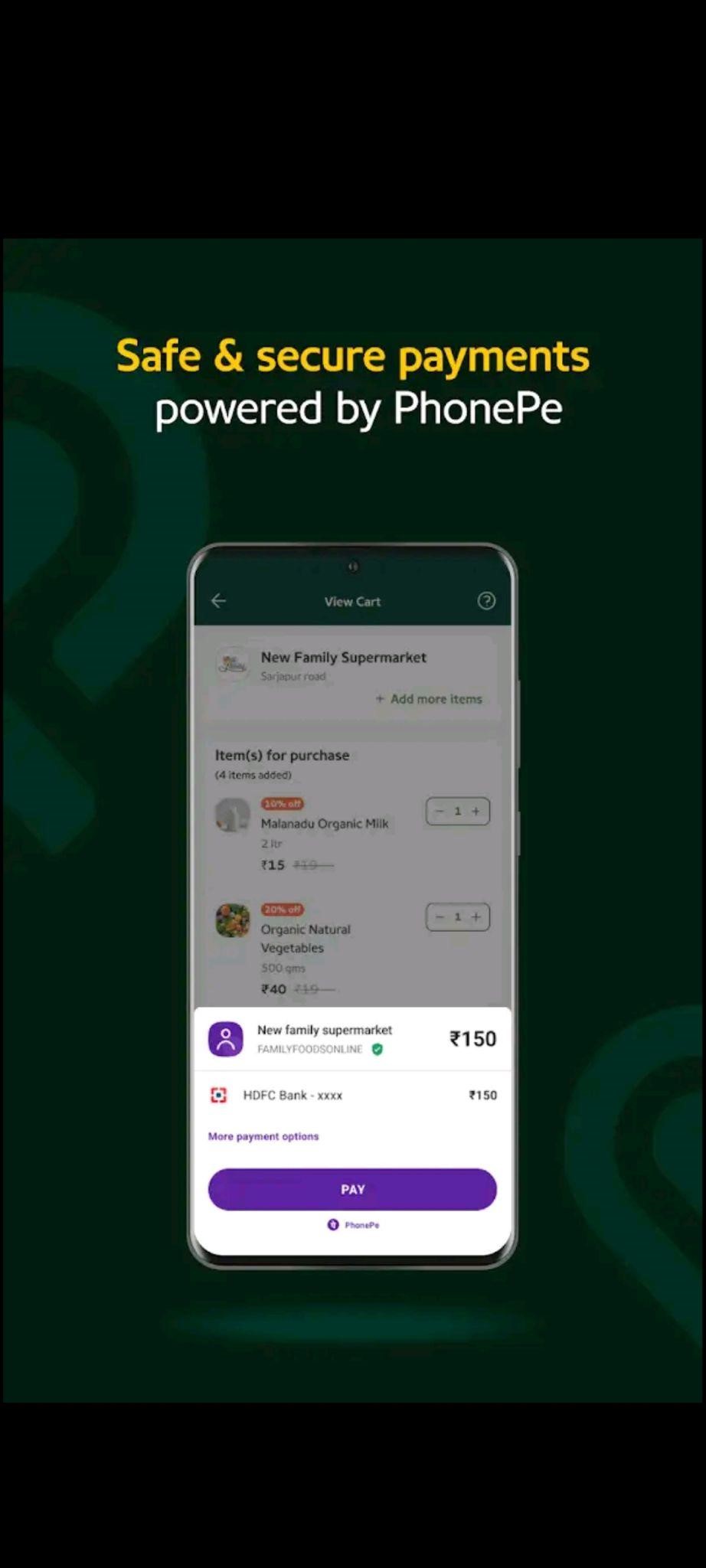 |
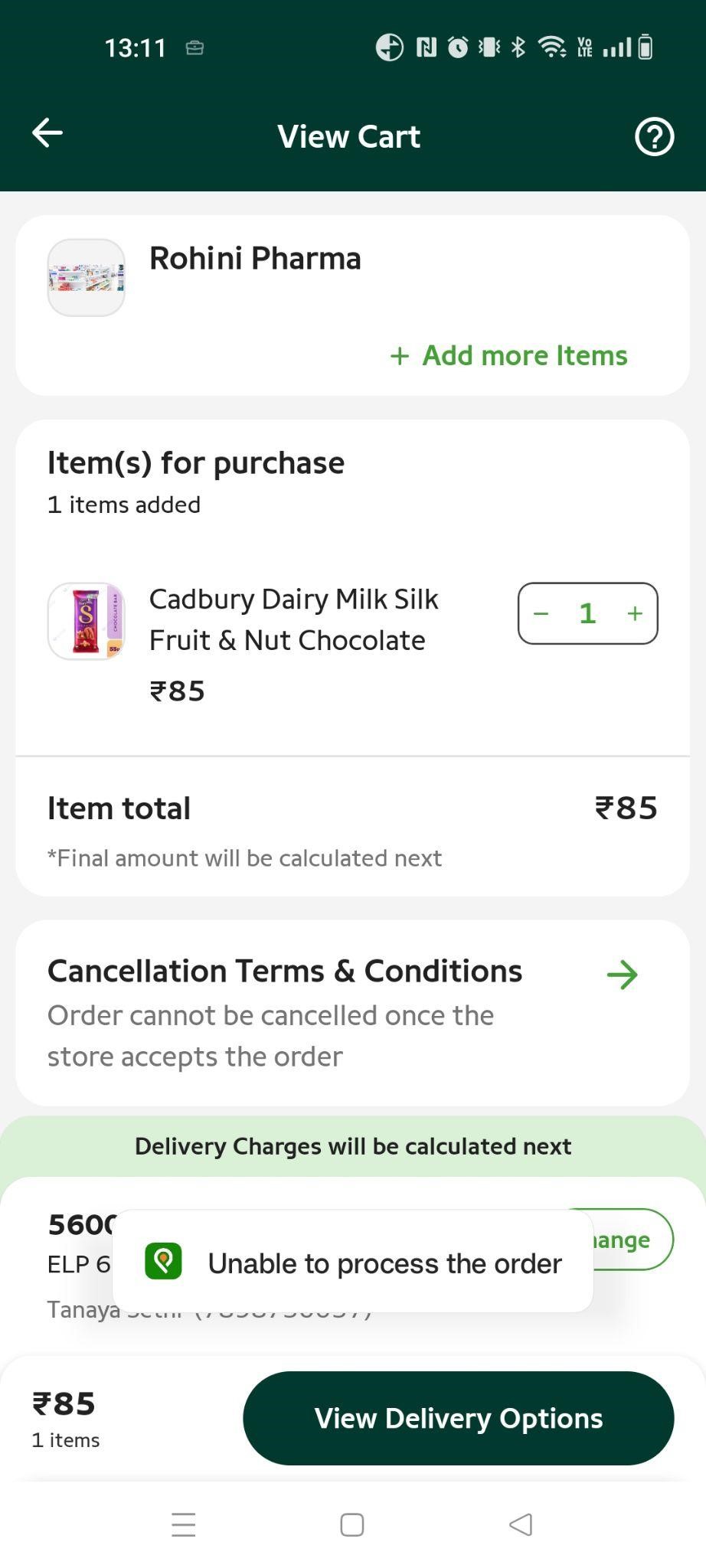 |
III. Solutions/ benefits offered by ONDC
ONDC presents an opportunity to move away from a platform-centric model towards a network-centric model i.e. a platform of platforms. It helps unbundle the current system by connecting buyers, suppliers, payment apps, and logistics providers through the use of open-source specifications and protocols. ONDC also helps encourage competition and innovation by displaying products from a larger number of sellers.
Benefits for sellers: ONDC would allow sellers (especially small sellers like local kirana stores) to provide their services to a larger set of buyers (customers). Also, sellers on the network will not be required to individually register with multiple platforms and set up separate infrastructures. ONDC enables sellers to offer their products to all the buyers registered on the network, substantially reducing the cost of doing business for these sellers.
Benefits for buyers: ONDC provides buyers with single-point access to all the sellers across the network. It not only offers more choices but also presents buyers with an option to select a delivery partner of their choice to get faster delivery of their products.
Benefits for technology service providers: ONDC provides technology platforms with new opportunities to drive innovation across various parts of the network, especially for start-ups. Since the network will already have a vast customer base, the technology partners can spend less time on marketing business solutions and focus more on improving their business operations.
IV. Will ONDC succeed in its endeavor to dilute market concentration?
Though the objective behind ONDC is to collaboratively meet demand in the market, the success of ONDC is highly contingent on the following:
- Participation by e-commerce giants like Amazon, Flipkart etc.
- Well-integrated payments and logistics apps for a seamless customer experience
- Technical capabilities of small and medium enterprises to be onboarded on the network
- Interoperability with existing platforms and apps
There is currently no clear roadmap to how the above issues will be addressed. Furthermore, despite getting access to more consumers/demand in the market, small players may remain affected by low prices/heavy discounts which only the big platforms can afford. While the ONDC network is currently offering various incentives and discounts covering a broad range of products and services in order to encourage wider participation from various merchants, these incentives are only being offered during the initial growth period of the network and will be discontinued in the next few months. Once these offers are rolled back, control over discounts and incentives will shift to the end-point merchants. In such a case, smaller players may find it difficult to compete with bigger platforms.
Having said that, in an effort to help small and medium enterprises onboard the ONDC network, Google has recently come up with an accelerator programme for ONDC which will provide businesses with access to Google Cloud’s technology and expertise. Google plans to make its core infrastructure APIs available to ONDC network participants; provide retail search and generative artificial intelligence (AI) to developers; and also grant $ 25,000 in cloud credits to startups registered on the ONDC network. Further, Google is also planning to enable integration of ONDC with Google Maps in order to improve order fulfillment via ONDC. It would be interesting to see how this initiative helps in streamlining the onboarding process for businesses.
In addition, further clarification is required on certain other aspects of the ONDC model. For example:
- Adtech business: Currently, there does not seem to be any policy in place to regulate adtech. Specifically, it is unclear whether network participants would be allowed to generate revenue through the display of advertisements within their apps.
- Transparency in search listing: Clarity is required on the listing of search results relayed back from the various seller-side apps and displayed on the buyer-side apps and on whether such listing would continue to be based on certain objective criteria. It is unclear how results are displayed (e.g. whether the display and ranking of search results is based on an objective criteria; and how self-preferencing could be checked in cases where buyer-side and seller-side apps are provided by the same entity.)
V. Relevance under India’s competition law
The Competition Commission of India (“CCI”) is currently investigating issues in the e-commerce industry against the following platforms:
- Swiggy and Zomato – Ongoing investigation on allegations including excessive commissions and no customer visibility.
- Flipkart and Amazon – Ongoing investigation on allegations including exclusive agreements, predatory pricing, and deep discounting.
ONDC too endeavors to address some key issues in the e-commerce industry like price regulation, data masking, multi-homing, self-preferencing etc. which can be explained as follows:
- Interoperability and standardization: The ONDC network aims to establish interoperability and standardization across network participants. This would eliminate the requirement to integrate separately on different platforms and would in turn help sellers to multi-home without having to set up separate infrastructures for separate apps/platforms.
- Data masking: Several e-commerce platforms (e.g. Zomato, Swiggy, Amazon) do not make customer information available to their partners (e.g. restaurants or sellers on their platform). Unlike these platforms, ONDC would make data on buyer behavior available to the seller so that they can improve their services.
- Price regulation: Pricing plays a major role in the positioning of players in the market. One way in which ONDC has been able to bring about price corrections is through the Namma Yatri app. Namma Yatri uses auction-based pricing instead of surge pricing (like Ola/ Uber) in times of excess demand. This form of pricing entails asking the customers for price offers in times of surge instead of using past customer data to charge surge prices. This practice of auction-based pricing used by ONDC participants like Namma Yatri can help prevent informal coalitions between market players in a surge, i.e. during periods when demand for the product is high. When prices are offered by the customers themselves, as in the case of auction-based pricing on Namma Yatri, it mitigates the risk of market players fixing or manipulating prices.
- Self-preferencing and private labels: Platforms like Amazon and Flipkart have faced the allegation of giving preference to their own private label products over those of other sellers in search rankings. Though presently the listing of products in the search results displayed on a buyer-side app registered on ONDC seems to be based on certain objective criteria, it would be interesting to see how the ONDC network policies address the issue of self-preferencing in a situation where both the buyer-side app and the seller-side app are run by the same entity.
VI. Legal considerations for Businesses
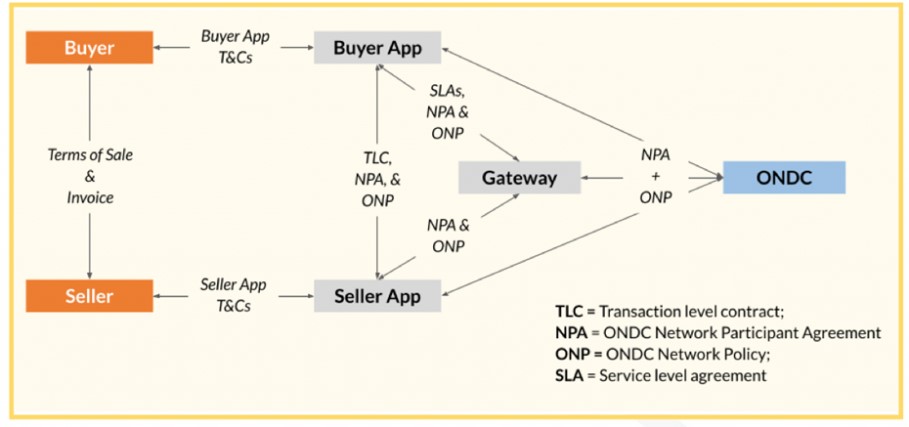
In order to instill trust among the network participants, ONDC has developed the following instruments to ensure the enforceability of rights and obligations:
- ONDC Network Participant Agreement (“NPA”) – The NPA governs the relation between ONDC and the network participants, including the buyer apps, the seller apps, logistics providers, and the gateway.
- ONDC Network Policy (“ONP”) – The ONP is a part of the NPA and lists out the details of the operational requirements for a network participant to be able to transact on the ONDC network.
- Transaction level contract (“TLC”) and Service level agreement (“SLA”) – Given that there are no pre-existing legal relationships between the network participants, including the buyer apps, the seller apps, and the gateway, the TLC and the SLA create a legal relationship between them for facilitating transactions over the network.
VII. Does ONDC offer a viable alternative to sellers over closed e-commerce platforms?
The ONDC network endeavors to increase discoverability for products/services offered by all sellers, big and small alike. This might encourage sellers (especially smaller players) to join the ONDC network over closed e-commerce platforms, say an Amazon or a Flipkart.
The primary reason for a seller to join a platform like Amazon or Flipkart is due to the customer reach that these platforms have managed to gain in the industry. The seller expects that through the platform, its products/services will be made available to a wider range of customers/buyers which would lead to increased sales and better margins. If ONDC is able to create a customer base which is equally as strong as that of these e-commerce platforms, then it would be enough incentive for a seller to choose ONDC over a closed platform. However, buyer behavior would still remain a challenge in the sense that nothing precludes a buyer/customer from logging into an app (which is also registered as a buyer side app on the ONDC network) and continuing to transact on the native app (e.g. a buyer logs into the Amazon app and instead of utilizing the ONDC gateway (assuming it is registered on ONDC), it continues to transact within the Amazon app which is outside the ONDC gateway).
Therefore, while the overall approach adopted by ONDC to foster growth by encouraging collaboration among various players in the industry sounds attractive, its success would highly depend on factors such as participation of large e-commerce platforms, onboarding of customers, fair and transparent policies for both the sellers and the buyers etc.
Click here for a PDF version of the article
1 Principal Associate, Competition Law & Policy, Economic Laws Practice (“ELP”).
2 Associate, Competition Law & Policy, Economic Laws Practice (“ELP”).
Featured News
Electrolux Fined €44.5 Million in French Antitrust Case
Dec 19, 2024 by
CPI
Indian Antitrust Body Raids Alcohol Giants Amid Price Collusion Probe
Dec 19, 2024 by
CPI
Attorneys Seek $525 Million in Fees in NCAA Settlement Case
Dec 19, 2024 by
CPI
Italy’s Competition Watchdog Ends Investigation into Booking.com
Dec 19, 2024 by
CPI
Minnesota Judge Approves $2.4 Million Hormel Settlement in Antitrust Case
Dec 19, 2024 by
CPI
Antitrust Mix by CPI
Antitrust Chronicle® – CRESSE Insights
Dec 19, 2024 by
CPI
Effective Interoperability in Mobile Ecosystems: EU Competition Law Versus Regulation
Dec 19, 2024 by
Giuseppe Colangelo
The Use of Empirical Evidence in Antitrust: Trends, Challenges, and a Path Forward
Dec 19, 2024 by
Eliana Garces
Some Empirical Evidence on the Role of Presumptions and Evidentiary Standards on Antitrust (Under)Enforcement: Is the EC’s New Communication on Art.102 in the Right Direction?
Dec 19, 2024 by
Yannis Katsoulacos
The EC’s Draft Guidelines on the Application of Article 102 TFEU: An Economic Perspective
Dec 19, 2024 by
Benoit Durand